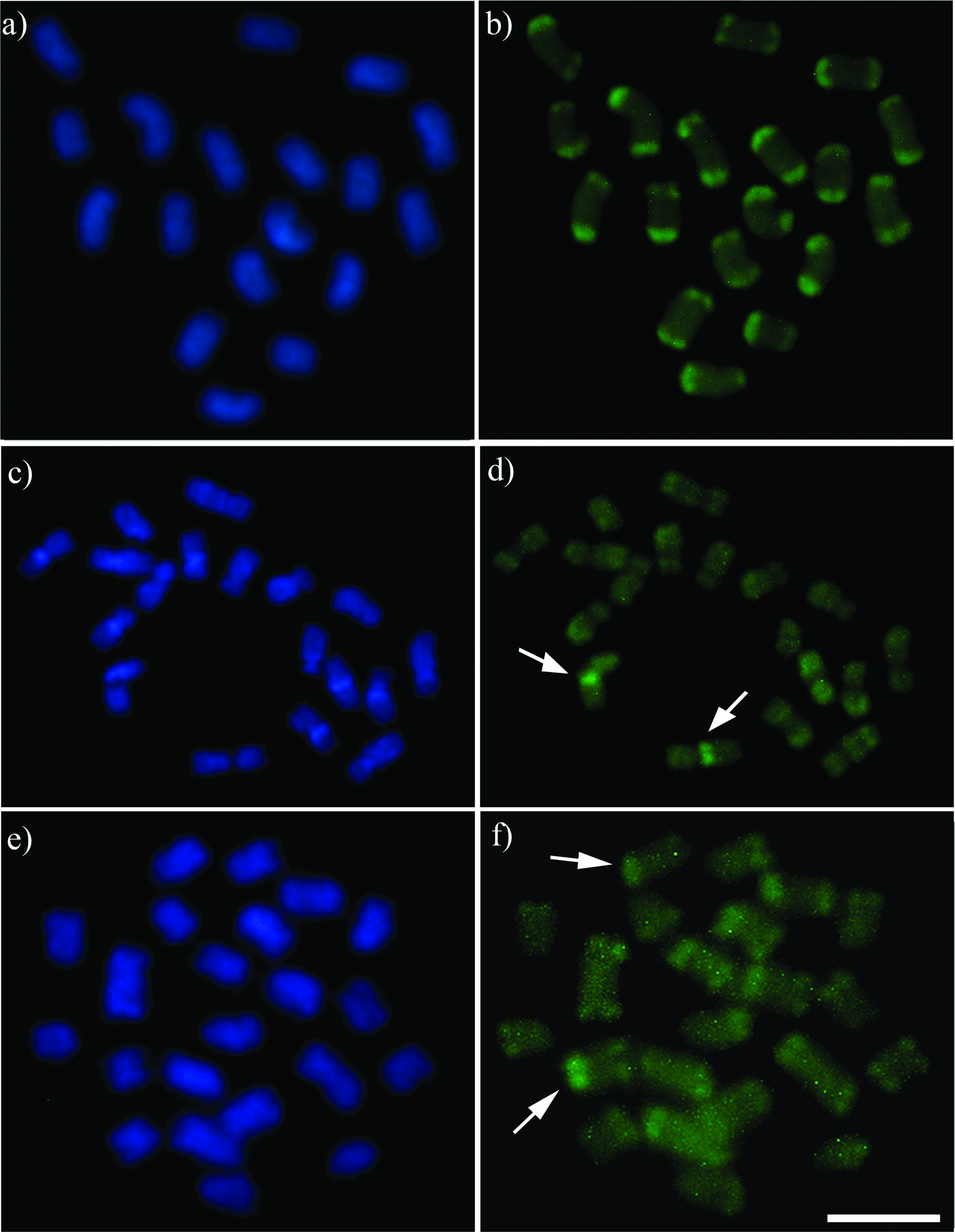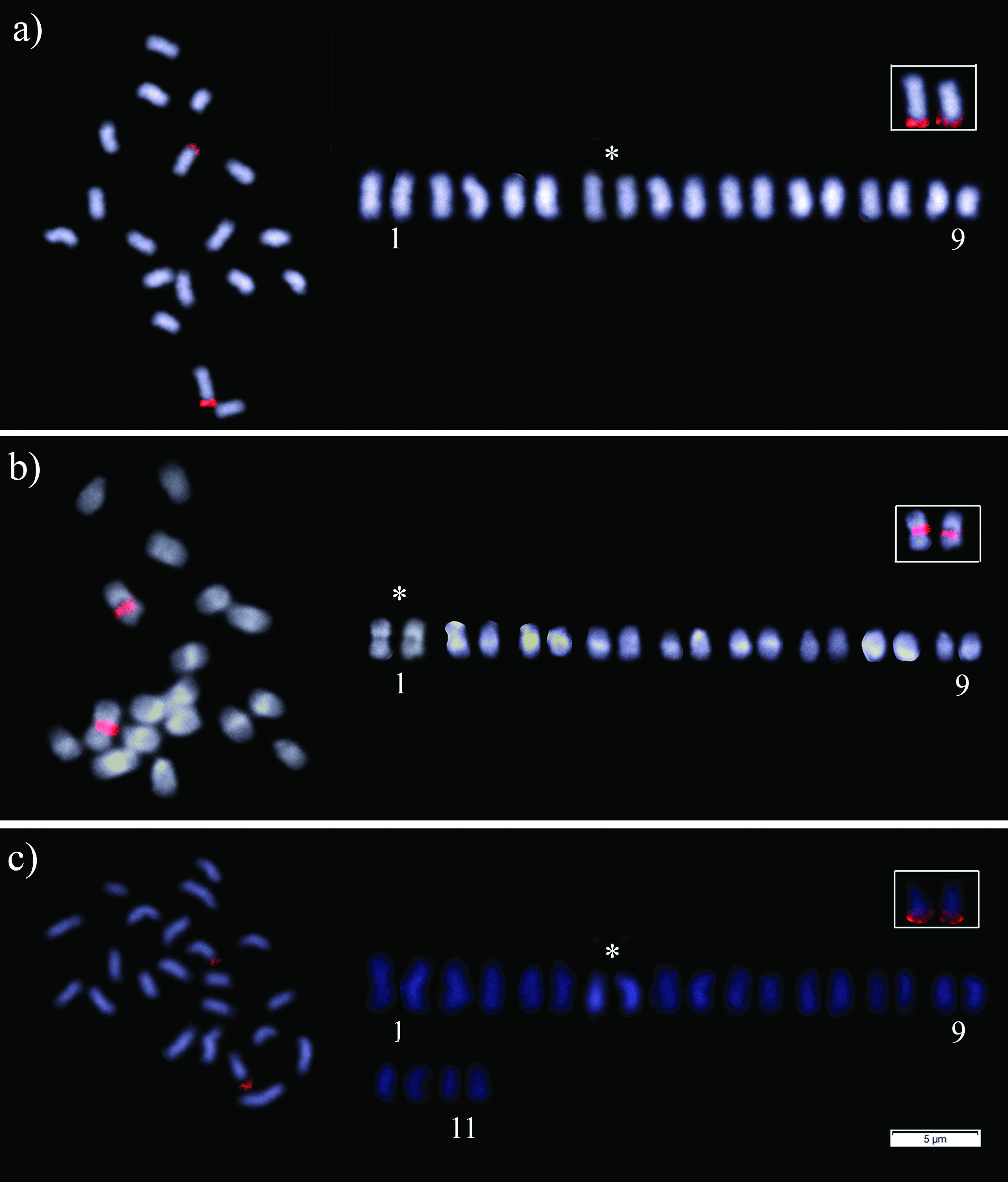Abstract
The genus Melipona is subdivided into four subgenera based on morphological characteristics, and two groups based on cytogenetic patterns. The cytogenetic information on this genus is still scarce, therefore, the goal of this study was to characterize Melipona paraensis, Melipona puncticollis, and Melipona seminigra pernigra using the following techniques: C-banding, DAPI/CMA3 fluorochromes, and FISH with an 18S rDNA probe. Melipona paraensis (2n=18) and M. seminigra pernigra (2n=22) were classified as high heterochromatin content species (Group II). Their euchromatin is restricted to the ends of the chromosomes and is CMA3+; the 18S rDNA probe marked chromosome pair number 4. Melipona puncticollis (2n=18) is a low heterochromatin content species (Group I) with chromosome pair number 1 marked with CMA3 and 18S rDNA. Low heterochromatin content is a putative ancestral karyotype in this genus and high content is not a monophyletic trait (Melikerria presents species with both patterns). Differences concerning the karyotypic characteristics can be observed among Melipona species, revealing cytogenetic rearrangements that occurred during the evolution of this genus. Studies in other species will allow us to better understand the processes that shaped the chromatin evolution in Melipona.
Keywords:
Chromosomal evolution; DAPI/CMA3 fluorochromes; Fluorescent in situ Hybridization (FISH); heterochromatin; Meliponini



